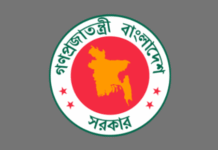
Population boom among the Rohingyas who entered Bangladesh fleeing violence in Myanmar is posing a new challenge when the government and international community have continued to struggle to cope with the situation.
Aid groups have warned that about 50,000 more Rohingyas would be born by this year only to aggravate the situation as ethnic minorities are already living in overcrowded camps and other settlements amid insufficient food, water, sanitation, health facilities and risk of diseases outbreak.
Bangladesh health officials said birth control of Rohingyas was required as the ethnic minorities had high birth rate and crude fertility rate.
‘Birth rate among the Rohingyas should be checked. If the present birth rate continues, it is certainly worrying for Bangladesh,’ said Directorate General of Family Planning deputy director in Cox’s Bazar Pintu Kanti Bhattacharjee.
Aid group Save the Children estimated that more than 48,000 Rohingya babies would be born in the camps in 2018 to be added to 1,500 Rohingya children already born in Cox’s Bazar.
These Rohingya babies from day one will be at an increased risk of diseases and malnutrition that may cause death before the age of five years as they are beginning their lives in refugee camps and makeshift settlements where families rely on food rations to survive and live in flimsy tents made of plastic and bamboo, warned Save the Children in a statement Friday evening.
Inter Sector Coordination Group comprising UN agencies and other international aid agencies estimated 15,480 deliveries in coming three months and about 58,700 pregnant women among the Rohingya population living in the camps.
‘Inadequate capacity of health staff to respond to pregnancy-related complications remains a major challenge,’ the group stated in its latest situation report on January 2, adding that most of the existing facilities were not operating 24/7 and were not providing the full spectrum of basic and comprehensive emergency obstetric services. Unclear referral pathways hamper timely delivery of life-saving services, it said.
Pintu Kanti Bhattacharjee, however, said that they estimated 25,000 to 30,000 Rohingya pregnant women in camps.
He said that 18,000 of the total pregnant Rohingya women had so far registered with the health facilities for delivery.
‘We provide adequate service for pregnancy related complications,’ he said.
UN agencies on January 2 said that 6,55,500 Rohingyas had entered Bangladesh from fleeing violence in Myanmar since 25 August 2017.
The new influx began after Myanmar security forces responded to Arakan Rohingya Salvation Army’s reported attacks on August 25 by launching a violent campaign against Rohingya people, which the UN denounced as ‘ethnic cleansing.’
Few of the about 48,000 babies will be born in health facilities, and from day one will be at an increased risk of getting sick, suffering malnutrition and therefore dying before the age of five, warns Save the Children.
‘We are expecting about 130 live births per day across 2018. Most babies will likely be born at home in basic tents, in part because of the shortage of quality, 24-hour health facilities able to handle and manage basic emergency obstetrics, as well as challenges accessing health care,’ said Save the Children health adviser in Cox’s Bazar Rachael Cummings.
‘The camps have poor sanitation and are a breeding ground of diseases like diphtheria, measles and cholera, to which newborns are particularly vulnerable. This is no place for a child to be born,’ said Rachael Cummings.
‘The disadvantage these newborn Rohingya babies will face, by virtue of the situation they are born into, is truly heartbreaking. From the very beginning they will battle odds stacked against them, living in an overcrowded environment where everyone is desperate for help,’ she said.
Pintu Kanti Bhattacharjee said that about 1,500 new Rohingya babies born in Bangladesh since August 2017.
Inter service coordination group said that high rates of home deliveries persisted, with just 22 per cent of births occurring in health facilities.
The government is trying provide different birth control methods for the Rohingyas to control their population boom but several field level health workers said that Rohingyas were not interested to take all those.
Pintu Kanti Bhattacharjee said that at the beginning of distribution of contraceptive injection, pills and condom many Rohinagys were less interested to take pills and condom.
‘But, the situation is changing slowly after we have taken some steps to motivate them,’ he added.
Since August 25, Bangladesh so far administered 9,000 Rohingyas with 3-monthly contraceptive injection and distributed 8,000 contraceptive pills and 1,500 condoms among Rohingya new arrivals.
Source: New age.










Following may be considered:
1. Any woman with more than 2 child, must have compulsory ligation.
2. Any man/woman with proven HIV, proven drug addiction, and/or similar incurable diseases must have compulsory sterilization.
3. Any man mentally confirmed retarded or physically incapable of raising children or incapable of maintaining a family shall be put thru compulsory vasectomy.
4. All unwed girls must be briefed of the risk of unwanted pregnancy & be allowed access to birth control pills free of cost.
5. All widows must be put thru copper-t, pills.
6. Condoms & pills shall be made available free of cost.
7. Abortion shud be made easily available, without asking questions.